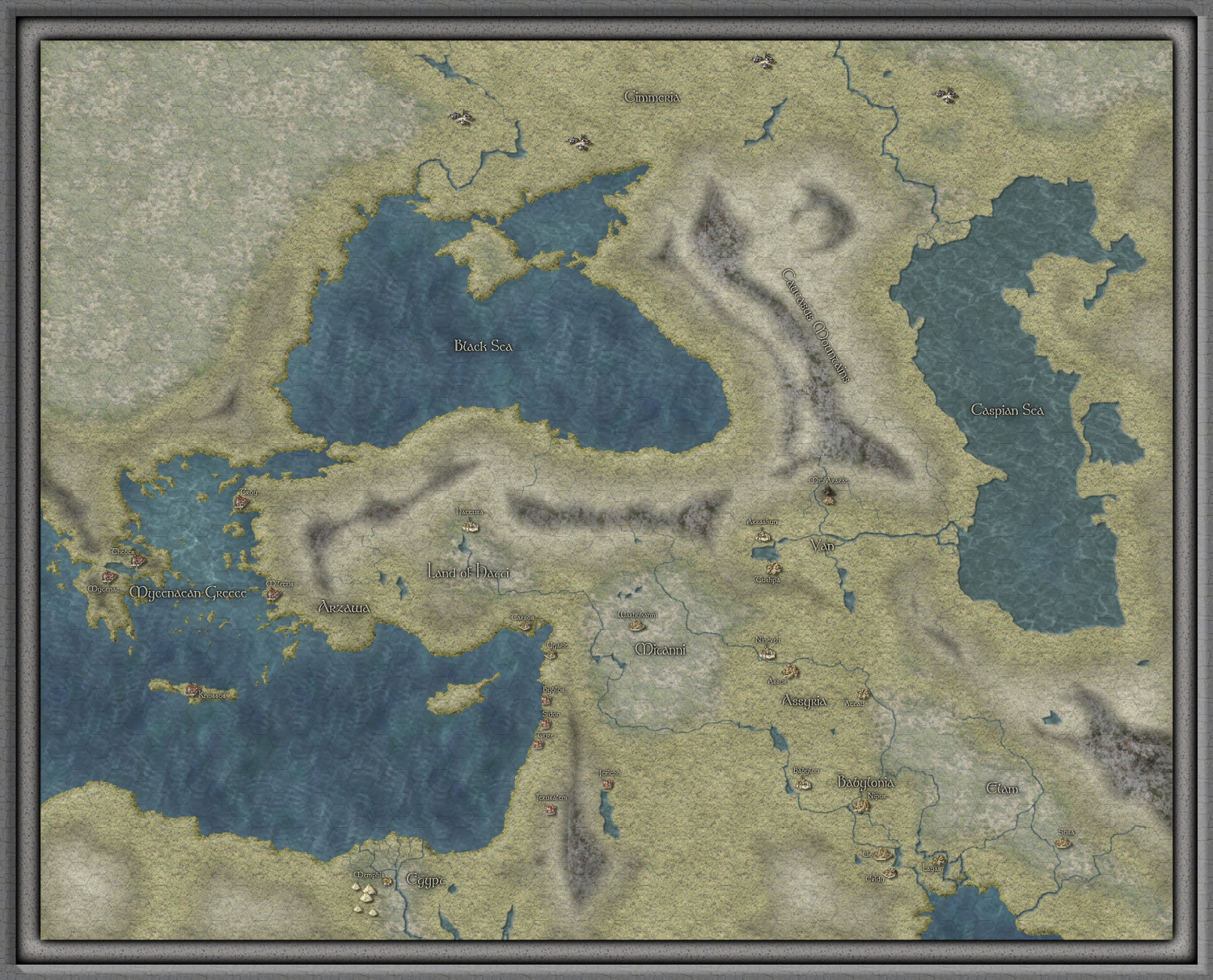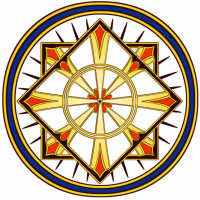Developing a map loosely based on Bronze-Age Mesopotamia
 aulyre
🖼️ 38 images Traveler
aulyre
🖼️ 38 images Traveler
Really loved the Myrr Overland style - sort of reminded me of maps of the Conan fictional universe, so I decided to make a map loosely based on Bronze-age Mesopotamia. It's been a fun experiment and I have learned a lot researching the bronze-age civilizations of the area. I have another layer with the political borders of the time (-ish).
I tried to essentially trace from a google map of the area, but rivers and small lakes were difficult, so they aren't anywhere near accurate.
Let me know what you think?
Tagged:










Comments
That's a lovely and impressive map.
I get the sensation of seeing double when I look at the sea, though. What effects are on that sheet?
Nice work. Much better than I can do.
@Loopysue I am just using the default Myrr Overland Sea effects, which is a simple edge fade, inner and I have a shallow edge (lighter colored polygon) along the land masses. I think it's the actual bitmap that is giving you that sense of seeing double?
It's certainly a very beautiful map, and I know well how difficult it is to find a suitable real-world base map from which to draw this region, so I think you've done a splendid job with it!
As Sue said, the seas look a little "double-exposed" currently though.
How historically-accurate were you intending to be with it?
I ask, as ancient Mesopotamia is a particular place of interest for me, especially around the 3rd-2nd millennia BCE, along with the Black Sea and places adjacent around the 2nd-early 1st millennia BCE, and east to what is now Afghanistan, Pakistan and western India. They're places I've mapped and studied in some detail previously, and there are points I could make which might be of use, though only if you were wanting it to be more historical.
The river lines are very complex, particularly if you're going for that historical route, and a specific time-frame. The Tigris has pretty much held its course over the millennia, largely thanks to a stonier bed, but the Euphrates has drifted hither and yon across the silts of southern Mesopotamia especially, encouraged by deliberately-dug irrigation canals in places, beginning around the later 4th millennium BCE, for instance.
I know when I started out trying to map parts of this region, something that surprised me was how poorly different published atlas maps compared with one another as regards the modern watercourses, especially for anything other than the major river channels, even in the specialist (i.e. archaeological-historical) literature.
@Wyvern, you aren't kidding about a lack of consistent maps for terrain of the period. I am not too worried about being incredibly historically accurate since I am planning to use this map for a campaign similar in style to Connan, but with DnD rules, but I would still love any insights, maps, and references that you'd want to share, since I just enjoy the history of that region.
I am going to play around with the sea / versus river bitmaps and effects. If I can get the see to have a similar texture to the Caspean Sea (which is using the river default effects), it should make it easier on the eyes.
It's funny because once you zoom in or look at the map in CC3, the "seeing double" essentially disappears. I certainly wasn't anticipating this issue!
As you'll likely be aware already @aulyre, there's a vast and still-growing literature on the archaeo-historical aspects of the region, and you could easily spend years simply wading through as much of that as you'd care to - I have, certainly, starting back in the 1990s!
Of my own maps of this region, I posted a selection just over a year ago on the Forum here. Unfortunately, this was shortly before the Forum underwent a major revamp to its current incarnation, so the post now looks rather a mess, as we had to embed images rather differently then, using an "[Image_12345]" coding notation, but the images are all still there, just no longer where they were meant to be in relation to the text, so you have to hop up and down to get the full gist properly.
As for references, a couple of atlases I found extremely helpful when I was starting out might be of interest, if you haven't come across them yourself as yet, and a couple of texts.
This has taken a lot longer than I'd expected to compile today, so I won't try to say more; there's enough to be going on with already, I suspect in this little lot!
@Wyvern Your maps via the link are truly great. I hope lots of others follow the link to see your work here.
Haha! Less "Double Vision"?
@Wyvern Thank you so much for the references and the link to your old maps! I will be poring over them. :)
It's not a map resource, but for anyone interested in the history of the area I just finished an excellent audiobook - "The History of the Ancient World," by Susan Wise Bauer. She has a really cool slant on how she puts everything together, drawing as much as possible from documents such as personal letters and accounts from the time, etc. and talking about the history from a perspective largely focused on the relationships and personalities of historical figures.
I'm not a history buff - not much of one at least - but I found it a very enjoyable listen.
I must admit, I don't often look at general history texts from the region now, but that Bauer book - which is still in print (published 2007), judging by what I found online this evening, including Amazon - looks interesting as an introductory source.
Seas are looking good on the map here now, though I'm not sure the hex grid really enhances it at the resolution possible on the Forum posts, unfortunately!
And thanks @Quenten!
I am also interested and pretty well informed about this area and time. I also have a great interest in ancient Anatolia (now Turkey). The whole region from Greece to Mesopotamia is quite fascinating, and this is a pretty fair rendering of it. Very excited to see you working on this!
Ah, I didn't notice the hexagon grid until Wyvern mentioned it.